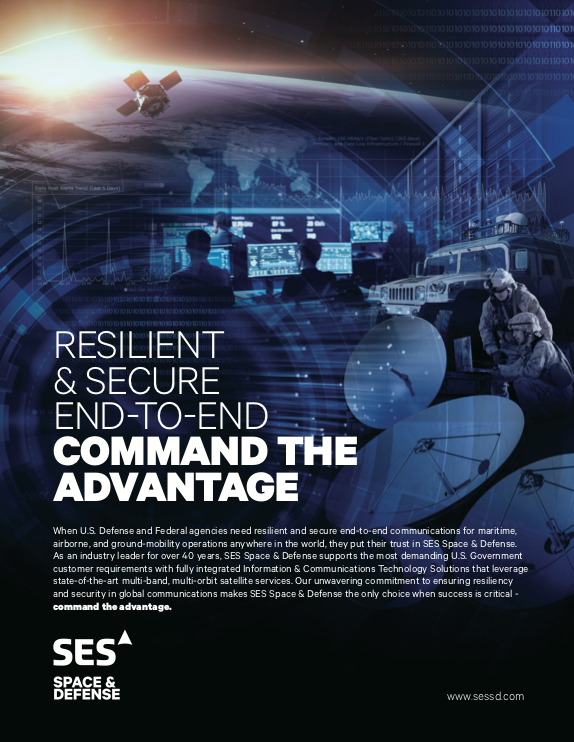The space sector is booming. By 2040, experts predict the industry will reach $1 trillion in annual revenue. But with the proliferation of commercial space launches also comes cybersecurity concerns.

Throughout this commercial space boom, digital engineering has become an integral component of the manufacturing process. Using digital twin technology to model, design and build space systems in a simulated environment enables manufacturers to test and fail fast without suffering financial blows.
However, those virtual digital environments often do not include cybersecurity research capabilities. Traditionally, digital engineering and cybersecurity have been considered separate domains rather than practices that go hand in hand.
To get the most out of these environments, combining digital engineering and cybersecurity into one solution—Secured Digital Engineering—will decrease costs for manufacturers, improve development speed and bolster the security of space assets throughout their lifecycle.
Realizing the fully formed vision of Secured Digital Engineering and establishing the inclusion of cybersecurity research in digital engineering will require an industry-wide understanding of these environments. However, manufacturers need to have buy-in and thoughtfully implement high-fidelity models that mimic complex cybersecurity attacks before the true value of Secured Digital Engineering can be realized.
The Four Major Components Of Digital Engineering Environments
Fully realized Secured Digital Engineering environments consist of four major components:
1 — Modeling and Simulation — These are the current everyday applications of digital engineering. Commonly used for products that require the development and testing of processes to mimic extreme operational environments, expensive hardware components
or highly complex scenarios. Modeling and simulation are proven risk reduction practices.
2 — Digital Twinning — When a digital twin computer-based simulation is engineered properly, it can serve many different virtual purposes, including anomaly detection and resolution and design updates.
3 — Cyber Evaluation Platform — This component delivers cybersecurity effects to different parts of the model through a cyber delivery platform, red team platform or simulation. Through this platform, research teams can launch virtual cyberattacks to test the simulation for different vulnerabilities.
From there, the data stream can be analyzed to see how the attack was delivered and understand its impact so teams can offer solutions for how such an anomaly could be detected moving forward.
4 — Data Collection Storage and Analytical Toolkit — The final piece is the data collection storage and analytical toolkit. This stage of the platform collects and compiles the data from the first three components in a central location. From there, data scientists can sort through and process the data and leverage AI and machine learning-led analytics to identify how the found anomalies would affect the entire spacecraft
Once fully realized, these environments provide significant value to manufacturers. However, for them to function at the highest possible level, high-fidelity models are required.

High-Fidelity Models Needed For Tangible Results
The ability to conduct Secured Digital Engineering is directly related to the level of fidelity in the modeling system. The better the model, the stronger the results. However, given that cyberattacks are highly complex and dependent on specific characteristics of the system they are attacking, models must have the fidelity to mimic the characteristics of cyberattacks or risk having little applicable use.
To provide meaningful results, the fidelity of the simulation must be thoughtfully designed and routinely updated to ensure reasonable accuracy. Likewise, model deficiencies must be considered and improved when necessary.
Simulated data models can offer real-world confidence and validation before the start of the manufacturing process but only under the proper simulated environments. For these models to function best, it is essential to consistently assess the simulation to ensure that the environment matches the tangible real-world project.
Without high-fidelity models in place, manufacturers increase both the risks and impact of cyberattacks. Systems may be put out of service for an extended period of time, which can prove costly and disrupt downstream military or commercial operations.
For instance, earlier in 2022 on the eve of its invasion of Ukraine, the Russian government conducted a cyberattack against a commercial satellite operator which cut satellite broadband service in Ukraine including connectivity for the country’s defense staff. In today’s world, where space is the new battleground, preventing such attacks and disruptions is ever critical.
The Mindset Needed For Adoption
While spacecraft manufacturers often acknowledge the importance of cybersecurity research, they have yet to make it a priority when using digital environments. In the same way that every component of a spacecraft is tested for radiation ahead of space deployment, these parts need to be evaluated for cybersecurity vulnerabilities.
The fully realized version of Secured Digital Engineering will be able to run 100 simulations, identify where significant abnormalities were detected and then build engineering safeguards to protect these systems against these vulnerabilities moving forward. To reach that point, however, there needs to be industry recognition of the value that cybersecurity research can provide to the manufacturing of space components, both for individual parts and full systems.

Tracking the software development process for the Department of Defense (DoD) serves as a good example of how technology over time can evolve to include cybersecurity protocols.
Development Operations (DevOps) have long used automation as a repeatable process to improve the quality and delivery of products but it took 15 years for that process to infuse security checks as a standard practice, now known as DevSecOps.
The same will likely be true for adopting cybersecurity research into digital engineering environments, but ultimately, the benefits — such as lower costs, increased project completion speed, and drastically improved security of space assets — will convince manufacturers that Secured Digital Engineering is a worthy investment.
bigbear.ai

Eric Conway is the SVP of Technology at BigBear.ai, where he defines strategy and directs the investment, research and development of advanced AI-powered analytics and cyber solutions for clients including the U.S. Department of Defense, Intelligence Community, and Federal Civilian agencies. Eric is a recognized subject matter expert in cyber network operations (CNO) and cybersecurity with over 25 years of experience as a technical leader in cyber software systems engineering and offensive/defensive cyberspace operations.



